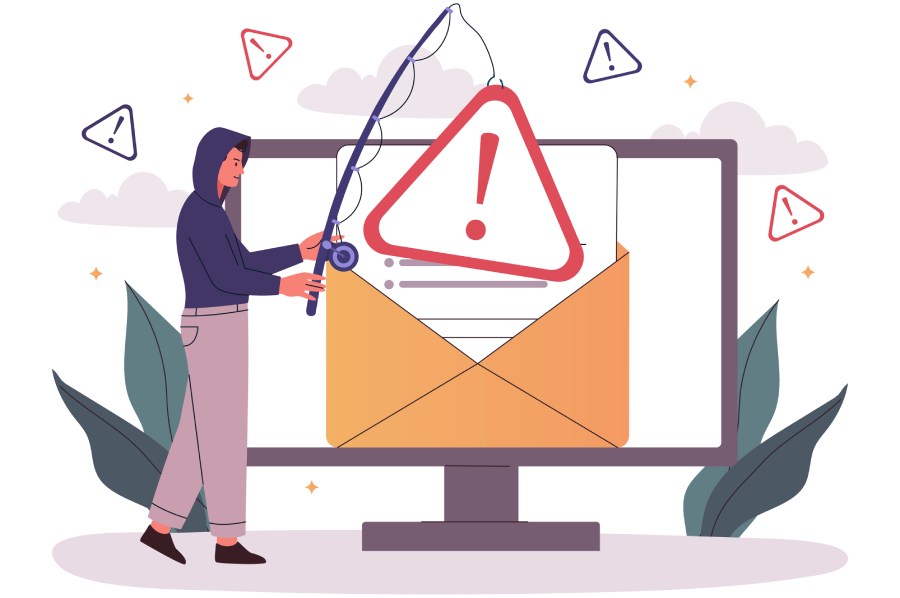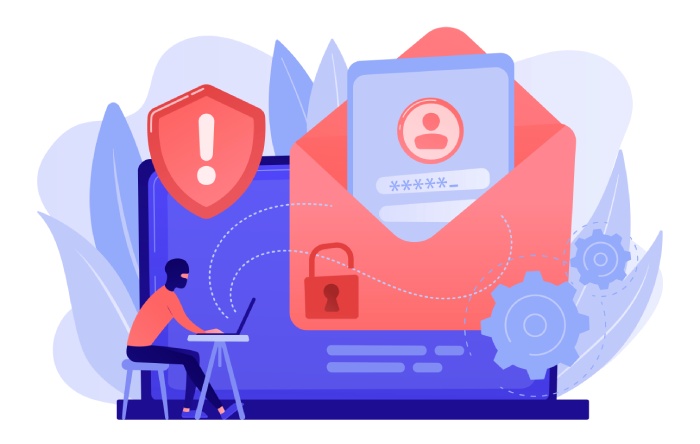DMARC TempErrors refer to temporary authentication issues related to email standards such as DKIM and SPF, which can lead to failures in DMARC validation. These errors can result in sporadic email delivery problems, particularly when using Microsoft servers, and addressing them may involve utilizing monitoring services like dmarcian.com for insights into performance metrics and error diagnostics.
Common Causes of Email Authentication Issues
One significant cause of DMARC TempErrors stems from an inadequate setup of DomainKeys Identified Mail (DKIM). This system is crucial in ensuring that the email content remains unchanged as it travels across the internet.
However, when DKIM keys are improperly configured—whether through incorrect key lengths or corrupted public keys—it creates a barrier for successful email delivery. A notable statistic shows that 85% of incorrectly set up DKIM keys contribute to authentication problems, as highlighted in a report by Google. To minimize risks, it is advisable to stick to standard 1024-bit keys, which provide a solid balance between security and compatibility.
As we explore further, it’s essential to consider how misconfigured SPF records can also create significant barriers in email authentication.
Another common pitfall is related to the Sender Policy Framework (SPF). This framework works to restrict which specific IP addresses are permitted to send emails on behalf of a domain.
Yet, syntax errors within SPF records can easily lead to TempErrors. For example, including non-existent subdomains or forgetting essential elements can disrupt the verification process. It’s wise to validate your SPF records regularly. Tools like MXToolbox can assist in identifying any discrepancies quickly and ensuring your records are correctly set up.
In addition to configuration issues, infrastructure changes also play a vital role in the emergence of TempErrors.
When migrating to new servers or cloud platforms, temporary disruptions often occur in email flow, resulting in frustrations and increased occurrences of DMARC validation failures.
This scenario is particularly prevalent during Microsoft Office 365 migrations, where users frequently report spikes in TempErrors tied directly to these transitions. Such migration processes may create transient challenges within email systems, causing delays in authentication checks. Thus, maintaining close communication with service providers during migration phases can enhance awareness and strategies to mitigate these interruptive errors.
Understanding these common causes is only part of the battle; addressing them effectively requires ongoing vigilance and proactive measures. Next, let’s look at actionable approaches to tackle these authentication challenges head-on.
Troubleshooting Steps for TempErrors
Identifying the root cause is just the beginning; it’s essential to follow a systematic troubleshooting approach to effectively tackle DMARC TempErrors. The complexity of these errors requires attention and a little patience, but the payoff—a reliable email system—is well worth it.
Step-by-Step Guide
The journey begins with checking the email headers. Email headers contain valuable clues about what might be going wrong during the authentication process. By analyzing these headers, you can spot inconsistencies in your DKIM (DomainKeys Identified Mail) or SPF (Sender Policy Framework) authentication paths. For this, tools like MessageHeaderAnalyzer come in handy. They help break down the complex information in headers into comprehensible data that allows you to trace where things went awry.
Once you’ve gathered insights from the email headers, it’s time to move on to validating your DNS records.
This step cannot be overlooked—validating your DNS records. You need to leverage reliable DNS lookup services to ensure your DKIM, SPF, and DMARC records are correctly published and accessible. Misconfigurations here can easily lead to failed email authentications. A tool such as MXToolbox is particularly useful in confirming that all your records align perfectly with industry standards.
Checking your DNS records helps set a solid foundation, but next, it’s essential to take a look at SPF specifically.
At this point, running SPF checks becomes necessary. You want to employ SPF evaluators like Kitterman, which can verify if your IP addresses are appropriately authorized to send emails on your behalf. If any unauthorized IPs appear, you’ll need to update your SPF record accordingly to include them before moving forward.
After verifying your SPF setup, it’s crucial to address another core component of the authentication process: your DKIM keys.
A deep dive into reviewing DKIM keys is the next logical step. Make sure these keys haven’t expired; if they have, they will lead directly to errors during email validation. Establishing a regular review schedule for these keys ensures you’re not caught off-guard by expiration issues in the future. Documenting these schedules can keep this task manageable and consistent.
Having tackled these foundational steps allows you greater confidence in addressing TempErrors effectively while also preparing for more advanced troubleshooting techniques.
Beyond these preliminary steps lie further verification processes that sometimes involve engaging with additional monitoring tools or consulting community resources for shared experiences. Continuous education and observance of trends related to DMARC practices can significantly enhance your email deliverability strategy and overall security posture.
With these troubleshooting strategies established, we now shift our focus toward enhancing the robustness of your configuration through careful management of DNS settings.
Verifying and Updating DNS Records
The journey to a properly functioning DMARC setup begins with accessing your domain’s DNS management portal. This is akin to opening the hood of a car to check the engine. Whether you’re using popular providers like GoDaddy or Cloudflare, the interface is usually intuitive enough for even those unfamiliar with technical jargon.
Upon logging in, head straight to the DNS management section where you’ll find a list of your current DNS records. It’s essential at this stage to familiarize yourself with what each record looks like, especially DKIM (DomainKeys Identified Mail) and SPF (Sender Policy Framework) entries.
After identifying where everything is located, the next crucial step is verifying your DKIM and SPF records.
Step I – Access DNS Management Portal
When you log into your account, seek out the DNS settings or DNS management option. Here, you’ll see all your current records laid out—this includes A records, MX records, and crucially for us, DKIM and SPF records. Look for entries that start with “v=DKIM” for DKIM records and “v=spf” for SPF records. Accuracy in these areas is vital; an outdated or misconfigured record can lead to serious authentication hurdles.
With visibility into your current records established, it’s time to ensure they are correctly set up and functioning.
Step II – Verify DKIM and SPF Records
To verify your DKIM and SPF settings effectively, consider using reputable online checkers like DNSstuff or MXToolbox. These tools are immensely helpful because they not only display whether your current records are valid but also detail any issues that may require your attention.
However, one critical thing to remember is that DKIM and SPF need separate settings for each subdomain you might have; failing to address this could leave gaps in your email security affecting emails sent from those subdomains.
Remember: Comprehensive coverage means meticulously checking each subdomain for its specific settings!
Having assessed your current setup, you’re now poised to make necessary adjustments.
Step III – Implement Changes Promptly
Once you’ve identified any discrepancies or expired keys in your DKIM or SPF records, it’s imperative to act swiftly. Updating these configurations can be done directly within the same DNS management portal where you accessed them initially.
Typically, updating involves editing existing entries or adding new TXT records as needed—just ensure you follow the correct format for DMARC which resembles something like: v=DMARC1; p=none; rua=mailto:example@domain.com;.
While making changes may seem straightforward, keep in mind that DNS updates don’t reflect instantly; propagation can take anywhere from several minutes up to 48 hours depending on various factors including TTL (Time To Live) settings—these dictate how long a record may cache before getting refreshed. So, patience is key after you’ve hit “save.”
As you wrap up this technical task, understanding what comes next can help maintain long-term email integrity.
Thorough record verification coupled with diligent updates fosters a robust email authentication landscape for your domain. By committing to such proactive measures, you’re fostering a secure atmosphere that elevates deliverability rates while enhancing your organization’s reputation among email service providers.
Before we move further into maintaining seamless communication channels, it’s crucial to explore additional strategies that bolster security throughout the email process.
Ensuring Sender Authentication
Strong sender authentication is essential for maintaining the credibility and deliverability of your emails. It’s one thing to send an email; it’s another to ensure it actually reaches the intended recipient without being misidentified as spam or phishing. That’s where DMARC, SPF, and DKIM come into play. By implementing these protocols, you create a robust defense against unauthorized senders who might try to spoof your domain.
Use of DMARC Policies
One of the first steps in ensuring strong sender authentication is through the implementation of strict DMARC policies. Opting for settings such as p=reject or p=quarantine can significantly mitigate the risk posed by unauthorized senders. However, it’s wise to start with a more relaxed policy like p=none during your initial deployment phases. This approach allows you to collect valuable feedback on your email traffic without immediately impacting legitimate communications. It’s akin to installing a security system while still monitoring daily activities — you want to understand your baseline before tightening security measures.
As you gather insights from this relaxed policy, pay attention to the sources generating reports. They will provide information on failing validations and potential sources of improper sender behavior. This knowledge will empower you to make necessary adjustments over time, transitioning to stricter policies that best serve your domain’s reputational needs.
Continuous Monitoring
Regularly reviewing DMARC aggregate reports is vital for sustaining healthy sender authentication practices. Services like dmarcian.com offer invaluable tools for monitoring these reports, providing insights about who is sending emails on behalf of your domain. These aggregated reports highlight potential fraud attempts as well as instances where valid emails might not be complying with your authentication settings.
By continuously monitoring these statistics over time, you can detect trends that indicate improvements or areas requiring immediate attention. Without this oversight, it becomes increasingly difficult to maintain a secure emailing environment.
Utilizing monitoring tools not only streamlines this process but also ensures that you remain proactive in thwarting any potential breaches or unauthorized access attempts. Over time, these tools will build a clearer picture of authentic traffic and help refine sending practices across your organization.
Establishing robust sender authentication isn’t merely about implementing strict DMARC policies; it’s a continuous journey that requires vigilance and adaptation. The next step involves proactive approaches to further minimize these common pitfalls and enhance your overall email security posture.
Strategies to Prevent TempErrors
Prevention is always better than a cure; thus, adopting proactive measures becomes indispensable in the realm of email authentication. One effective approach is conducting regular audits of your email infrastructure.
Think of these audits as tune-ups for your email system—they ensure compliance and highlight crucial areas such as DKIM key rotation and SPF record updates. Just like changing the oil in a car can prolong its life and enhance performance, regular audits can significantly reduce the likelihood of encountering TempErrors. When you make it a routine to inspect and adjust your authentication settings, you’re effectively creating a more resilient email operation.
Moving on from proactive compliance checks, there’s another element essential for maintaining reliability in your email system: choosing the right tools.
Utilizing reliable email service providers (ESPs) like SendGrid or Mailgun is pivotal when aiming for seamless email authentication. These reputable providers come equipped with built-in compliance mechanisms that work tirelessly behind the scenes to minimize authentication issues.
Their established infrastructures are designed to prevent hurdles related to DMARC, DKIM, and SPF, allowing you to focus on what matters most—delivering impactful messages without worrying about interruptions caused by engine failures in the email chain.
But what happens if something does go wrong? Having contingency plans in place is equally important.
Implementing fallback mechanisms enhances your system’s resilience against potential failures. By enabling secondary DKIM keys that are readily available in DNS if primary keys fail, you can significantly minimize downtime. This approach serves as a safety net—like having a spare tire in your trunk for those unexpected moments when you encounter a flat.
When a primary key is unavailable and your emails risk bouncing back or being flagged as undeliverable, having a fallback at hand ensures continuity, allowing you to maintain smooth communication flows.
As we continue exploring how to elevate your email security strategies, understanding additional preventative measures will be invaluable in enhancing overall reliability and safeguarding against common pitfalls.
Best Practices for Email Security
In today’s digital age, protecting your email has never been more critical. By implementing standard best practices, you become proactive in guarding against potential threats and unauthorized access. One of the most effective measures to secure your email accounts is to enable Multi-Factor Authentication (MFA). This additional layer of security goes beyond just requiring a password; it might involve a verification code sent to your mobile device or even utilizing biometrics, depending on your service provider.
The beauty of MFA is that it significantly reduces the risk of unauthorized access, making it harder for potential intruders to compromise your account.
However, security doesn’t end with MFA; regular updates play a crucial role as well.
Next, keeping your email server software and any related applications up-to-date is vital. Cyber threats are always evolving, and hackers often exploit vulnerabilities found in outdated software. Regularly installing security patches ensures you’re protected against known threats.
Picture this as changing the locks on your house when you’re notified of a neighborhood break-in—you’re taking steps to reinforce your defenses based on current risks.
Conducting thorough training sessions for employees should also be part of your strategy. One simple phishing email can lead to significant breaches. These incidents can happen even in the most vigilant organizations, which is why it’s essential that every team member understands the dangers lurking behind seemingly innocent emails. Training should cover identifying suspicious messages and practicing safe email habits, advocating a shared responsibility towards email security.
To keep track of your progress in maintaining a secure email environment, consider these actionable steps:
- Enable Multi-Factor Authentication across all accounts.
- Regularly audit and update DNS records to ensure accuracy and prevent spoofing.
- Choose reputable email service providers known for their robust security measures.
- Maintain ongoing education regarding phishing attempts and emerging email threats for all staff members.
- Conduct frequent reviews of your entire email infrastructure to identify and address potential vulnerabilities.
Following DuoCircle’s guidelines provides a strong foundation for defending against email-based threats while ensuring that regular updates and validations remain essential components of the system.
In today’s complex digital landscape, consistent vigilance and adherence to these best practices are key to maintaining robust email security.


